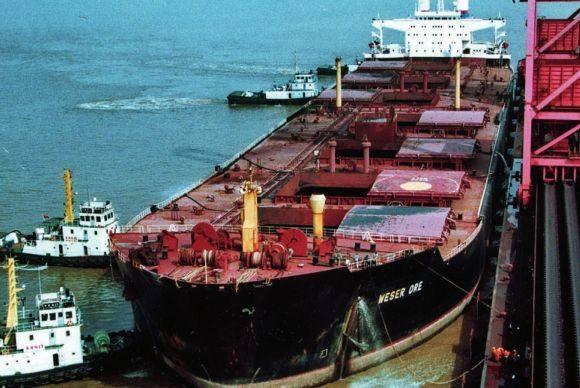Key Issues for Asia’s Growth
By JOHN ROSS

THE overall global context of Asias economic growth in 2013 remains negative, particularly in developed economies. At the end of last year Japans GDP was 1.7 percent below its maximum prior to the international financial crisis, while GDP in the European Union was 2.1 percent below. U.S. GDP growth is anemic, having reached only 2.5 percent above its last peak five years ago. Some of the previously dynamic BRICS economies are also encountering problems – Indias annual GDP growth has fallen to 4.5 percent and Brazils to 1.4 percent. World commodity prices, a sensitive indicator of strength or weakness in the global economy, also remain significantly below their peaks.
This situation obviously provokes widespread discussion in Asia – evident, for example, at this years Boao Forum for Asia, themed“Seeking Development for All.” China is Asias largest economy; its interaction with other developing Asian economies that are among the worlds most rapidly growing, therefore, is crucial for the entire region, and plays a major role in the wider world economy.
Chinas 7.7 percent GDP expansion in the fi rst quarter of 2013 is by far the fastest of any major economy. Growth is also continuing in Southeast Asia – GDP expansion was 18.9 percent in Thailand (although this is artificially high due to recovery from fl ooding), 8.0 percent in Laos, 7.1 percent in Cambodia, 6.8 percent in the Philippines, 6.4 percent in Malaysia, and 6.1 percent in Indonesia. Key questions in Asia, therefore, are first: how can strong growth be maintained amid headwinds from other parts of the world economy; and second: how can this development benefi t all Asians?
Chinas key role in maintaining growth throughout the region is evident. Chinas economy is not yet large enough to determine the situation of the overall global economy, but large enough to enact this role in Asia. With the exception of Japan, most major Asian economies are relatively open to trade – exports account for 35 percent of GDP in the East Asian and Pacifi c developing economies. China is the largest trading partner of most of these. There- fore, Chinas ability to maintain rapid growth throughout the international fi nancial crisis has enabled Asia as a whole to continue to expand. Chinas future economic performance will hence be equally critical for Asia.
This is a genuinely “win-win” interaction. China has the highest percentage of trade in GDP of any major economy, with Asia accounting for half its exports. A virtuous circle thus exists wherein Chinas growth aids other Asian economies, and their growth equally provides a market for China. Objectively, Asias trade has reshaped from one centered on the U.S. and Europe to one powered by China.
But for this growth truly to benefi t all, a radical restructuring and expansion of Asias transport and communications capacity is necessary. It is already relatively easy for coastal regions to trade, but enormous infrastructure construction is required if all Asias inland areas, including western China, are to benefi t.
The bulk of Asia lags far behind the U.S. and Europe with regards to the infrastructure necessary for a more even regional development pattern. China itself only has one-tenth of the railway coverage per person of the U.S., and its infrastructure is far stronger than most developing Asian economies. Unless this deficiency is overcome – a task that will take decades of investment – Asia as a whole cannot benefit even from rapid economic growth. To ensure development for all, therefore, requires international follow-up on the stress former Chinese premier Wen Jiabao laid on developing international Asian infrastructure.
Second, there is a widespread global understanding that social inequality has become excessive. Countries as diverse as the U.S., France, the UK and India have recently increased taxation on their richest citizens. In China, excessive inequality has become a hot issue. This widespread global movement is bound to have further impact on Asia in the context of attempts to ensure that development brings benefits to all.
Finally, a strategic Asian issue will affect these discussions. China promotes an inclusive Asian development agenda, explicitly ensuring that its interests are served by promoting a winwin outcome for all participants. Inclusion of all countries in this development agenda, therefore, is not mere rhetoric but corresponds to Chinas strategic understanding of the situation. Chinas own interests are seen as lying in the maximum development of all countries – for reasons already outlined.
Regrettably the U.S. administration currently pursues a different Asian approach – one characterized by the Financial Times as ABC –Anyone But China. This approach is politically destructive, undoubtedly encouraging irresponsible actions by extreme Japanese nationalists that increase tensions over issues such as the Diaoyu Islands. Economically, meanwhile, the U.S. is attempting to create a “Trans Pacific Partnership” agreement that would exclude China. These proposals would effectively divide Asia into a “slow growth group” of relatively protectionist economies centered on the U.S. and a “faster growth group” of open economies pursuing non-discriminatory trade relations with China.
Chinas increasing weight in deciding and discussing such issues that are critical to Asian and global economies is clear. This years Boao Forum was attended by Chinas new president Xi Jinping, other heads of state and government not only from Asia but also Australia, New Zealand, Mexico, Peru and other countries, and leading figures from the world of finance and business such as Bill Gates, George Soros and Christine Lagarde.
Difficulties in Asias external economic environment continue. But if Asian countries maintain cooperation there is no reason why they should not carry on successfully navigating the currently choppy global economic waters.

